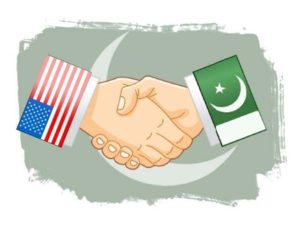South China Sea.
The South China Sea is a semi-enclosed area measuring 3.6 million square kilometer in the Pacific Ocean.
It spreads from Straits of Malacca and Karimata to Taiwan straits and is bordered in the north by China and Taiwan, the Philippines in the east, Brunei and Malaysia in the south, and Vietnam in the west.
It contains numerous islands, rocks and reefs. Major ones being Spartley islands, Paracel islands, Pratas and Natuna islands and the Scarborough shoal.
SCS: Importance
The area is believed to contain rich reserves of oil, natural gas, minerals and fishery stocks.
The region is considered to be a centre of future economic growth in East Asia and is also sometimes called a “second Persian Gulf”.
Major sea routes of shipping pass through this area.
The strategic location and the abundant resources make it a subject of interest and concern for littoral states and the international community.
SCS: Disputes
The security issues around it always remain in focus and it is considered to be one of the flashpoints.
The South China Sea disputes are regarded as one of the most complex and challenging ocean-related maritime disputes in East Asia, involving both islands and maritime claims among sovereign states.
The underlying problem is the claim of overlapping areas by different countries, involving China, Brunei, Malaysia, Vietnam, the Philippines, and Taiwan. They all claim that they own the sovereignty of the islands or islets, reefs and / or resources.
The traditional high seas freedoms of navigation and over flights are also at stake in the dynamics of SCS, making the issue even more complex with involvement of extra regional and other major powers including United States.
Due to the number of claimants and the complexity of claims, it is called the “mother of all territorial disputes”.
China is by far the biggest country in the region and claims sovereignty over almost all the South China Sea. The region has become a flashpoint for tensions between China and other nations which claim sovereignty over two largely uninhabited island chains, the Paracels and the Spratlys. China claims the largest portion of territory, saying its rights go back to centuries.
SCS Disputes: Recent Status
Recently it has become the locus of disputes that have the potential of escalating into serious international conflicts. Since the outbreak of the Covid-19 pandemic, tensions in the South China Sea (SCS) have been on the rise. This is mainly for China’s continued assertive actions and for the sharp deterioration in US-China relations over China’s massive territorial claims in the SCS.
Coming UP: Analysis of various aspects related to SCS Disputes
Comments and value additions are most welcome
For regular updates please register here –
https://55nda.com/blogs/anil-khosla/subscribe/
References:
- https://scroll.in/article/968918/how-did-the-south-china-sea-dispute-begin-and-where-is-it-headed
- https://www.bbc.com/news/world-us-canada-53397673
- https://www.lowyinstitute.org/issues/south-china-sea
- https://www.peacepalacelibrary.nl/library-special/south-china-sea-territorial-disputes/
- https://www.drishtiias.com/daily-updates/daily-news-analysis/south-china-sea-dispute
- https://www.straight.com/news/khalid-zaka-a-summary-of-south-china-sea-conflict
-
The Politics of South China Sea Disputes, book by Nehginpao Kipgen

